
The push for subscription pricing is gaining popularity with Mac app developers. You might be disappointed, especially if you like to own apps outright instead of paying for them every month or year.
But since you can’t turn back the clock, it’s best to look for other options that seem viable to you. Start with our alternative recommendations for five popular apps that have switched to subscription models in the past few years.
1. Replace 1Password With Secrets
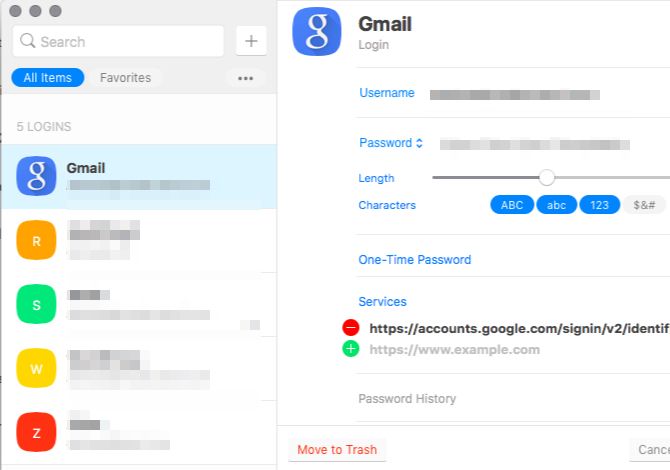
1Password is a powerhouse of an app and, in a way, irreplaceable. You probably won’t find its entire set of features in a single app, but Secrets comes with a few similar ones that are quite useful. One of them is the ability to generate one-time passwords for sites where you have enabled two-step verification.
The second is the vulnerability assessment feature. It uses the Have I Been Pwned database to check whether your logins have been compromised in any data breach.
Secrets can also pinpoint old and weak passwords, as well as expired credit cards, for you. You can use its custom filters and tags to replicate 1Password’s multi-vault setup.
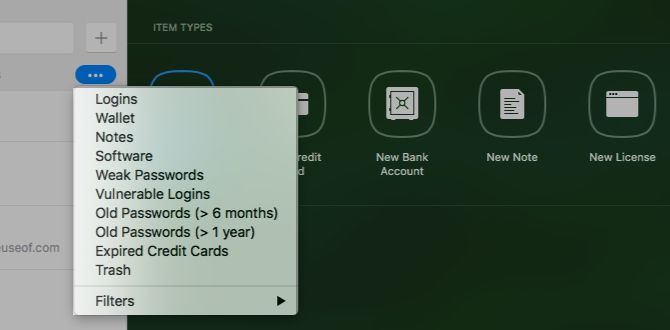
With Secrets, you get up to 10 items in the free version and unlimited use in the premium offering.
If you can do without 1Password’s Travel Mode and the Families/Business membership accounts, Secrets is worth a try. It’s available on Setapp, syncs with iCloud, and lets you to import your data from 1Password.
The lack of file attachments, custom fields, and password sharing might be a deal breaker for you. Even if that’s the case, it’s a good idea to keep up with the development of Secrets, as it’s getting better with each iteration.
In the meantime, check out other free alternatives to 1Password.
Download: Secrets for Mac (Free, $20 premium version available) | iOS (Free, $10 premium version available)
2. Replace Ulysses or Bear With Agenda
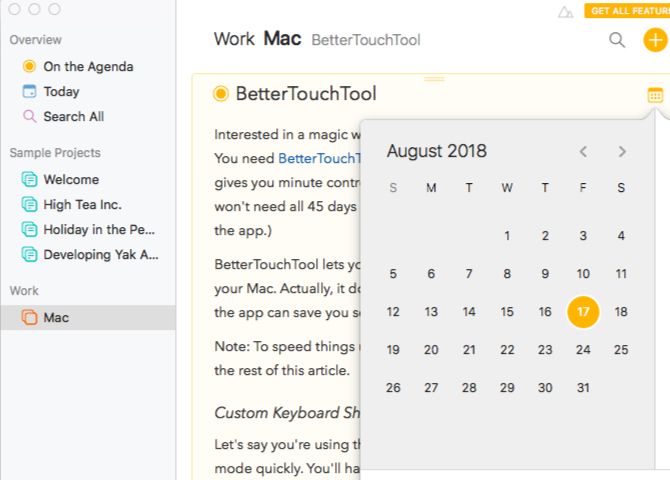
Trying to match a writing app with Ulysses feature-by-feature is pointless. The best you can do is find a robust app that does what Ulysses does at its core, which is:
- Give you a customizable writing environment
- Organize your notes
And Agenda can become that app. It takes a timeline-based approach to note-taking, which makes it easy to both look back and plan ahead. You can link notes to specific dates or calendar events to put time-sensitive notes On Your Agenda. The app also supports tag and checklist creation.
You’re sure to find the “related notes” feature particularly handy since it makes switching between notes a lot easier. To learn more about it and all other app features in detail, go through the sample projects that show up in Agenda.
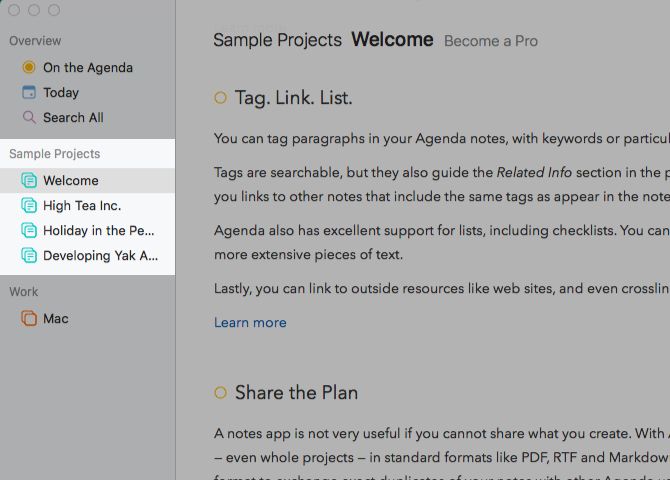
It’s a pity that Agenda doesn’t give you any color/theme options. But that’s likely not a big deal for you when the app has so much else going for it.
While you’re exploring Agenda, you might also want to take a look at the following apps:
- Scrivener (Free trial, $45 license required): Get this if you want a dedicated novel-writing app that’s as feature-rich as Ulysses.
- Typora (Free during beta): The beta tag is deceptive because the app seems ready for the big league.
- Notebooks (Free trial, $19 license required): The lack of a recent Notebooks update is the main reason Agenda wins out over this app on our list.
- SnipNotes ($5): It comes with glowing reviews from the web but, unfortunately, not with a free trial.
Download: Agenda for Mac (Free, $25 Mac + iOS premium version available) | iOS (Free, $10 premium version available)
3. Replace Text Expander With Typinator
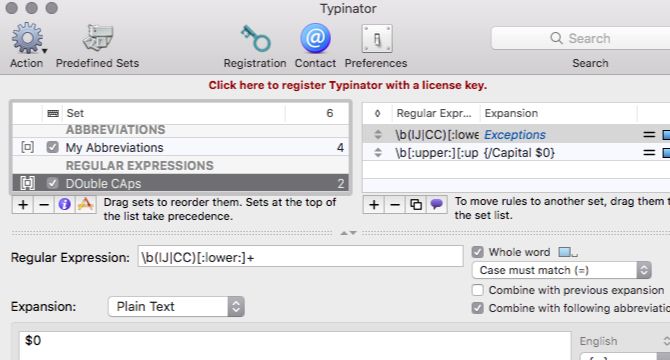
Before you look for a TextExpander alternative, see if any Mac apps you already use come with an integrated text expansion feature. There’s Alfred, for example, and BetterTouchTool. If these won’t work for you, you might want to give aText ($5) a shot. It comes with a free trial.
If nothing else short of an app as feature-filled as TextExpander will do, get Typinator. It allows you to insert text snippets and images automatically. The app also has autocorrect functions, date and time calculations, and HTML expansions, among other features.
It’s quite handy that you can customize Typinator on a per-app basis if you want to. One more point in favor of Typinator is that it offers upgrades at a discounted price.
To help users switching over from TextExpander, the makers of Typinator have set up a dedicated information page about using the app. It includes an overview of the differences between Typinator and TextExpander.
PhraseExpress ($25) is another sturdy text expansion app worth trying. You can pay the maintenance costs for, say, three years or five years while buying the app.
Download: Typinator for Mac (Free trial, $29 license required)
4. Replace Photoshop With Affinity Photo
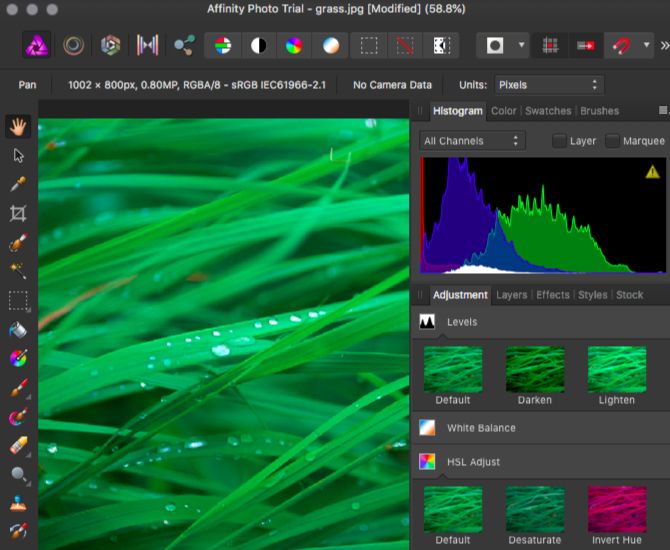
Affinity Photo comes with a clean, well-designed interface. You’ll find a handful of workspaces dedicated to different types of editing operations in the app. These ensure that the advanced tools stay out of your way until you need them.
The app has quite a few useful features including customizable shortcuts, PSD support, and advanced selection tools. It also comes with six extensions that allow you to do light editing work on images stored in your Mac’s Photos app.

Want more power at your fingertips? Try the re-editable filters with live previews and non-destructive editing capabilities.
Affinity Photo includes many concepts and tools similar to those you’ll find in Photoshop, but it would be unfair to call the app a Photoshop clone. The similarities just make it easier to switch over to Affinity Photo from Photoshop.
Of course, depending on the type of creative work you’re involved in, you might miss some of the advanced features of the latter. But there’s no doubt that Affinity Photo has shaped up really well and is worth exploring.
In addition to this app, you might want to check out a few others on our list of free and paid image editors for macOS.
Download: Affinity Photo for Mac (Free trial, $50 license required) | iPad ($20)
5. Replace Day One With Dyrii Journal
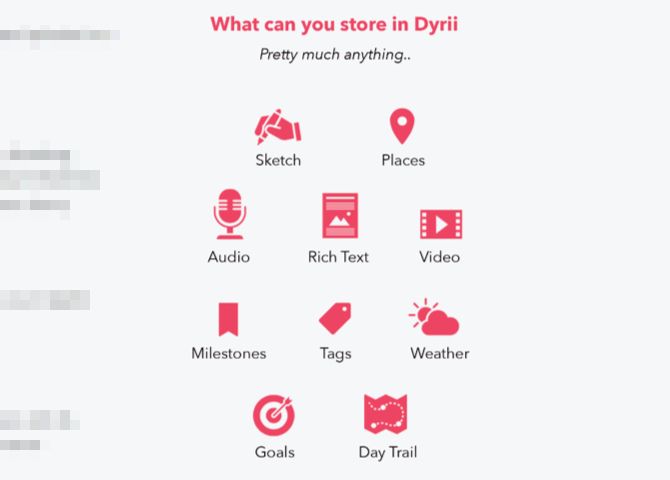
For a change, here’s one app that’s switching from the subscription model to one-time pricing. It’s a pity that the developers of Dyrii Journal have put new feature development on hold. But they’ve promised ongoing support for the existing app, which is why you might want to go ahead and give this one a shot.
Dyrii Journal allows you to add text, photos, videos, audio, geolocation, and more to your journal. You can even add drawings with the Apple Pencil.
The app makes it easy to import your Day One entries and also allows you to store your data locally. The iCloud sync and mood tracker features make this great app even better.
Now for the not-so-good news.
The current Dyrii Journal version does not come with a free trial. (It did before, as part of the subscription model.) So you’ll have to rely mainly on web reviews, which are highly positive, to decide whether Dyrii Journal is the one for you. It’s a gamble, yes, but if it pays off, you’ll have a solid Day One replacement on your hands. Be sure to do some thorough research first.
MacJournal ($40) is another excellent alternative to keep an eye on. It doesn’t have the visual impact of Day One, but it’s a versatile app. The only catch is that the app hasn’t seen an update in a couple of years, but that’s set to change.
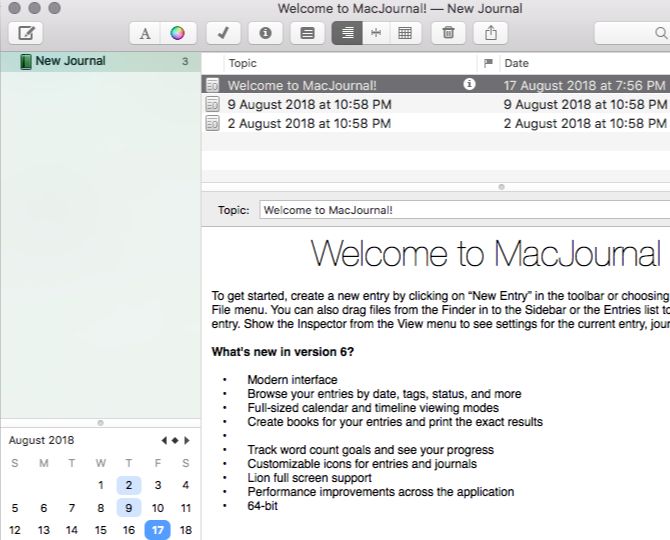
The Agenda app we mentioned above can also make a good journal thanks to its calendar integration.
If you don’t find the perfect journaling app to replace Day One, you might want to turn to the trusty Evernote to record your life.
Download: Dyrii Journal for Mac ($40) | iOS ($10)
Or Take the Middle Path With Setapp
The debate over subscription pricing looks set to continue. Whether you engage in it or not, the crux of the matter is that you either have to pay for subscriptions or grab your data and switch to single-payment apps.
There’s a middle path, too: you can get premium Mac apps with a single Setapp subscription. It’s not the perfect solution, but at least you’ll end up paying for fewer subscriptions overall.
Read the full article: 5 Mac App Alternatives If You Hate App Subscriptions
from MakeUseOf https://ift.tt/2BNiKPo
via IFTTT
No comments:
Post a Comment